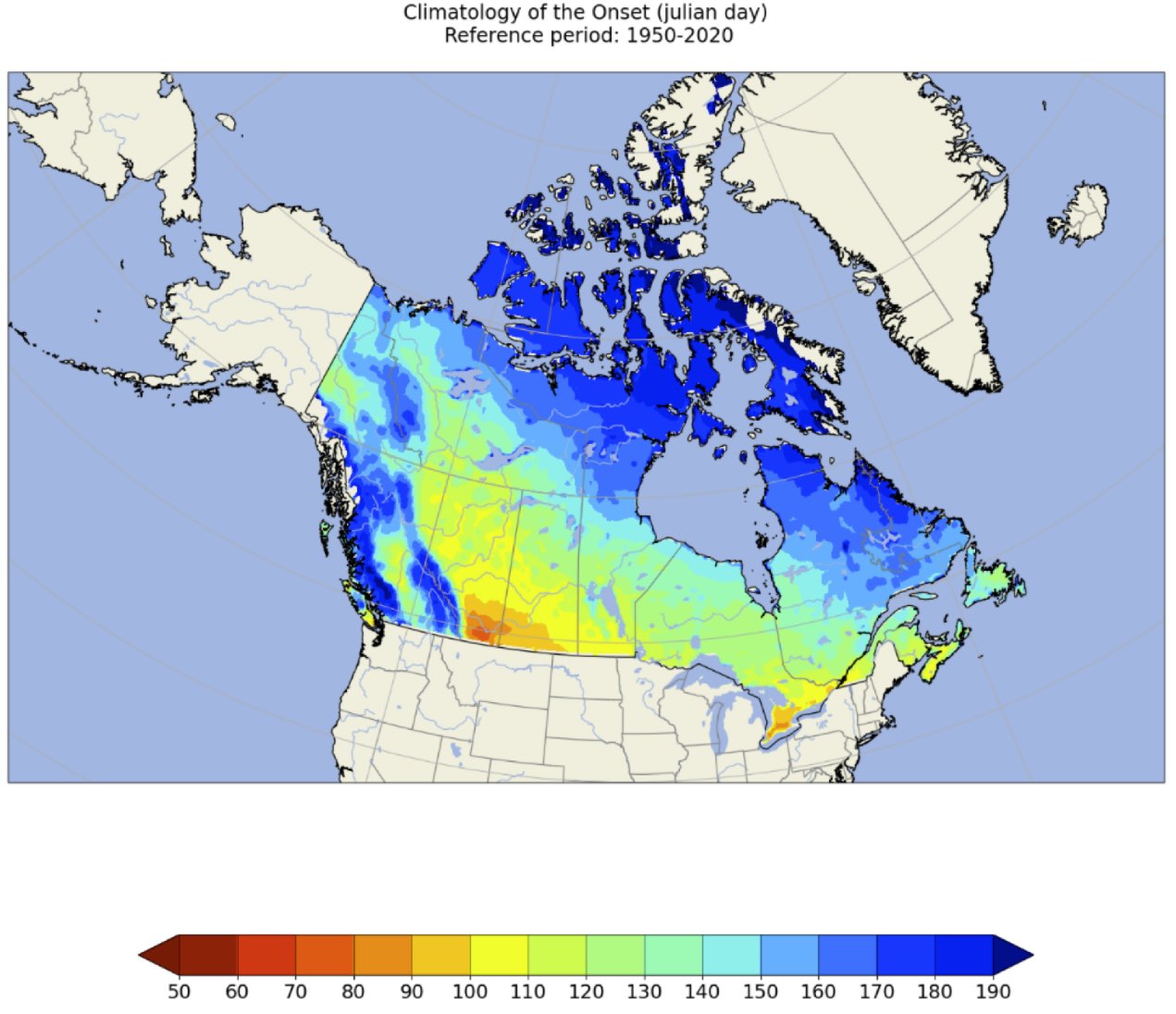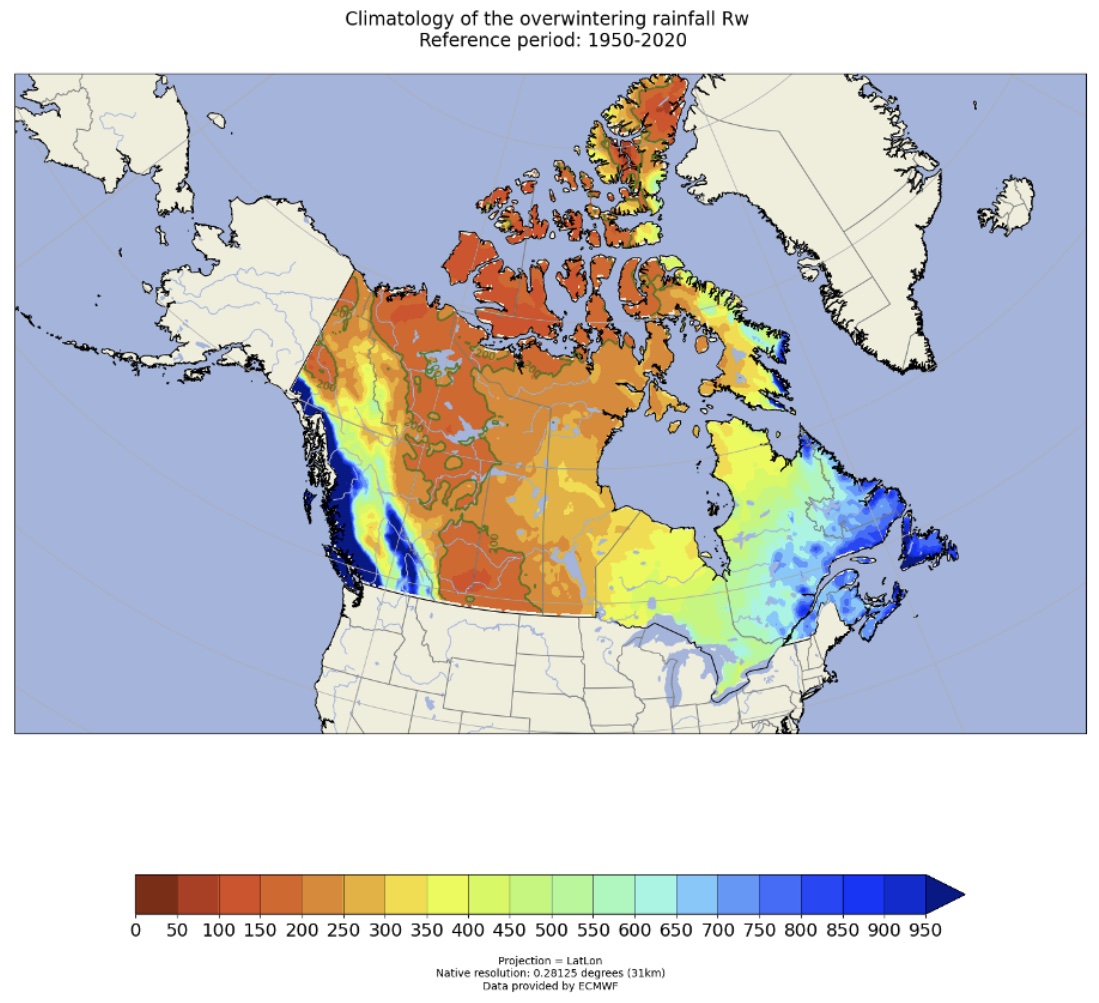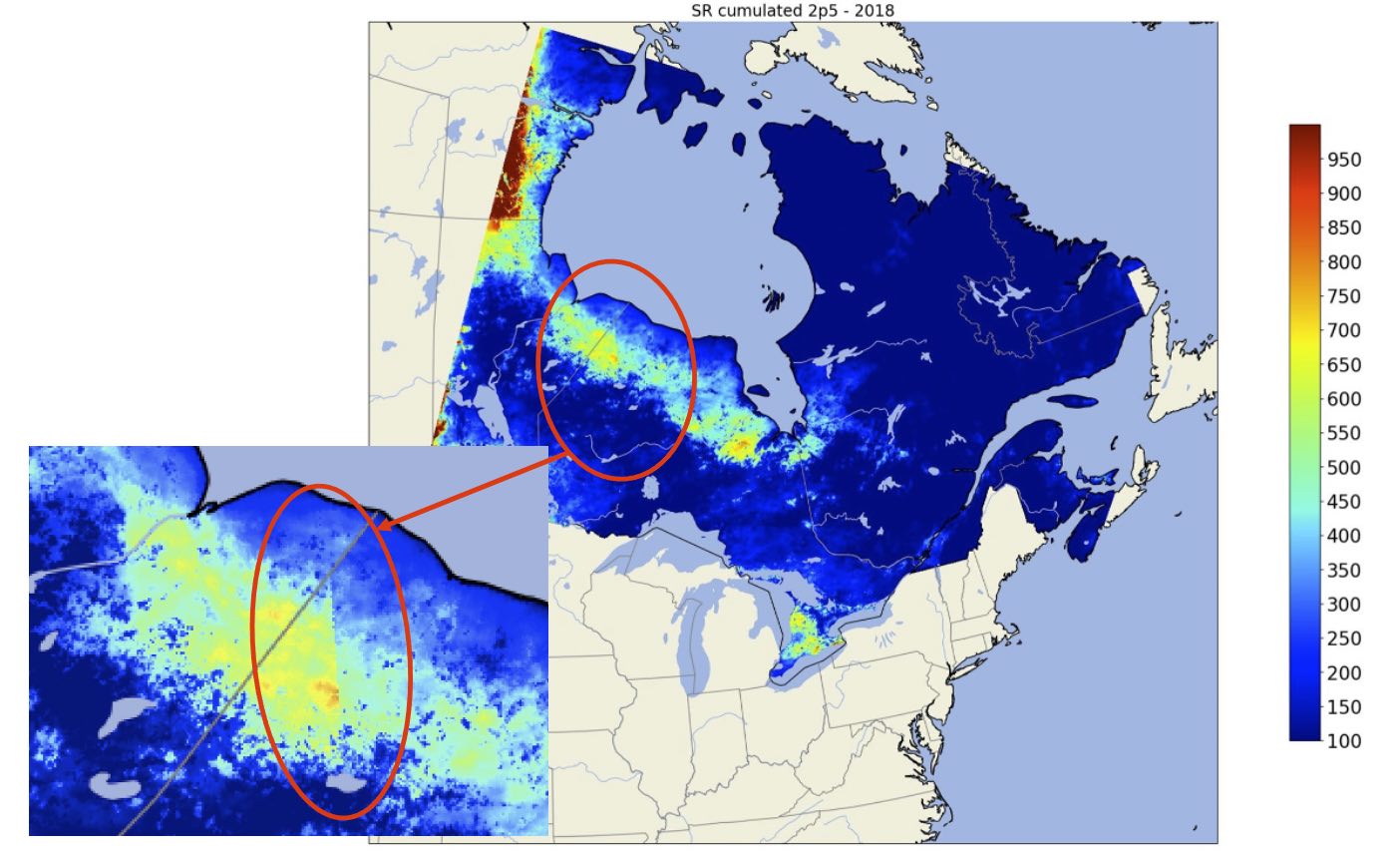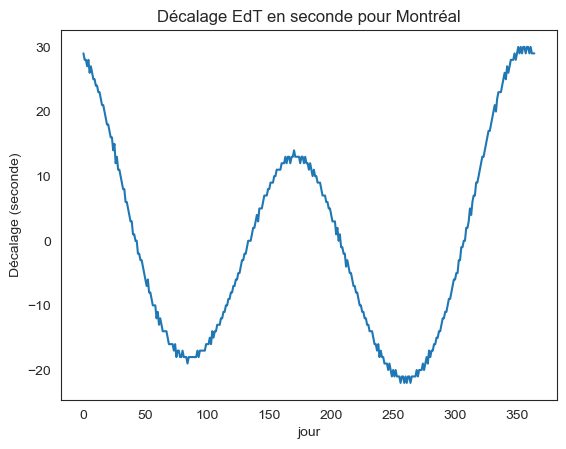METHODOLOGIES (UNDER DEVELOPMENT)
FWI methodology
Trends and anomalies methodology
Atmospheric blockings methodology
References
Input data
ERA5 reanalysis
The main data sources used are from the ERA5 reanalyses (Hersbach et al., 2020), available at a resolution of about 31 km and covering the period from 1950 to today. They are provided via the data store of the European Copernicus project (C3S, 2017). Most of the data used are available every hours.
Global reanalysis data are produced by combining observations and meteorological models using data assimilation techniques, in order to provide the most realistic description of the weather and climate of recent decades. These global reanalyses are therefore used to reproduce past weather conditions and are often used as a reference, in particular to compare or validate MCGs simulations under recent historical conditions (see definition and information provided by the ECMWF : ECMWF center website).
Simulation Data - GEM5
The forecasts come from simulations using the new MRCC6 (Canadian Regional Climate Model version 6) model, developed at ESCER (UQAM), which is based on the HRDPS (High Resolution Deterministic Prediction System) model and GEM5 physics (McTaggart et al., 2019).
FWI methodology (to be updated)
The Forest Weather Index, developed by the Canadian Forest Service (Wang et al., 2015), is used and calculated from ERA5 data. Initially, this index is calculated over a season based on weather observations available at noon local time, which is based on the 24-hour temperature, relative humidity, wind speed, and precipitation variables, as well as the previous day's fuel moisture conditions as defined in Van Wagner and Pickett (1985). This method has been modified by a more physical approach by taking into account, instead of the time set at noon local time, the time when the sun is at its zenith (solar noon equation, see explanation below).
The calculation of the FWIs is done using a python library composed of six functions derived from the R code used to calculate the Canadian Forest Fire Danger Rating System (cffdrs R). This library can be used for a weather station, and has been adapted to work on model or grid data in Netcdf format.
All codes developed in python language have been adapted to work on daily station data (ascii or text format) and meteorological variables in Netcdf format, including CRCM6 simulations.

The main function of this library uses as input a time series of data containing daily weather observation variables taken at 17:00 UTC or on a daily scale:
These standard initial values for FFMC, DMC and DC are defined as follows:
The initial default values (i.e. "start-up": FFMC = 85, DMC = 6, DC = 15) provide a reasonable set of conditions for most spring conditions in Canada, the northern United States and Alaska. Initially, for Quebec, the calculation of FWI is started three (3) days after the complete disappearance of snow (SWE=0) at the local level, this parameter corresponding to the start of the fire season is called Onset. Another cumulative index is used, the Severity Rating index (SR) which is calculated according to the Forest Weather Index (FWI). This index is cumulative, using the following formula:
\(\text{SR} = 0,0272 \times FWI^{1.77}\)
Improved calculation of Onset and end of fire season :
A first version of the Onset calculation was performed taking into account only the presence of snow cover. The Onset corresponded to the third day after the first day without snow on the ground. This first configuration, well adapted to the province of Quebec where snow cover is present every year, was not adapted to the western provinces of Canada, where snow cover is not guaranteed in winter. After discussions with RNCAN, it was decided to add various physical thresholds to better estimate the Onset for each province.
The Onset is now determined:
By calculating the Onset climatology (see figure below) for the period 1950-2020, it can be seen that the melting of the snow cover is effective as early as mid-February in southern Alberta and early March for southern Ontario. This is followed by a gradual melting of snow following a gradient from south to north for the rest of Canada.

Another calculated parameter, the end of the fire season, is considered complete after 3 consecutive days with a maximum temperature of 5°C or less. These new criteria will make it possible to obtain the precise duration of the forest fire season each year regardless of location in Canada (Wotton and Flannigan, 1993; McElhinny et al, 2020).
Overwintering DC :
Of the three fuel moisture codes (i.e. FFMC, DMC and DC) that make up the FWI system, only DC requires the retrieval or consideration of values from the previous season. This is because in Canada, it is assumed that FFMC and DMC reach moisture saturation from winter precipitation at spring melt. Even so, this is a reasonable assumption because any errors in these assumed starting conditions quickly disappear. However, if snowfall (or other winter precipitation) is not significant enough, the fuel layer tracked by the DC drought code may not fully reach saturation, during spring snowmelt if it is small. Due to the long response time of this fuel layer (53 days under normal conditions), a large error in this spring starting condition can affect the DC for the beginning of the fire season. An adjustment, called Overwintering DC, is then applied for the driest areas of Canada. The equations for the adjustment are :
Moisture in the late fall of DC :
\(\text{Qf} = 800 \times \exp(\frac{-\text{DCf}}{400})\)
Early Spring DC Moisture:
\(\text{Qs} = a \times Qf + b \times (3.94 \times rw)\)
DC obtained for the beginning of the fire season:
\(\text{DCs} = 400 \times log(\frac{800}{Qs})\)
In areas where winter precipitation is 200 mm or more, such as Quebec, moisture recharge is complete and the overwintering DC adjustment is unnecessary. Consequently, for each year of the study, the total winter precipitation (rw) was calculated in order to delimit the areas where the overwintering DC adjustment will be performed. The figure below shows the climatology of this rw value, i.e. the total winter precipitation values (between September 1 and Onset) across Canada. The winter adjustment is applied only within the green contour lines (i.e. where total precipitation < 200 mm, calculated annually).

Improvement of the FWI calculation method with solar noon :
The initial calculation method is based on the use of local noontime meteorological parameters for each time zone present in Canada and causes, especially for high-resolution simulations, various biases and artefacts, including:

To solve the biases and artifacts present with the local noon method, a new method based on a more "physical" approach, i.e. entirely based on the elevation property of the sun, has been developed. The latter, called the solar noon method, consists in computing the weather light indices at each grid cell by taking the time when the sun reaches the zenith (i.e. the highest position of the day in the sky). In order to obtain the solar noon, it is necessary to apply to the legal time of 12:00 a longitude correction (1° of longitude corresponds to a time shift of 4mn). Then, a correction called "equation of time" is applied, the latter corresponds to the fact that the Earth does not always move at the same speed on its orbit, the Sun can appear at zenith with a shift of up to +-16 minutes from the legal time. The evolution of this shift is shown for Montreal on figure 2. The final equation is :
Solar noon equation:
\(\text{Solar noon} = \text{Legal time} + \text{Longitude correction} + \text{Equation of time correction}\)

The outputs of the models and reanalyses being on an hourly basis, the solar noon is calculated for each grid point and a temporal proximity proportion is applied between the two closest temporal fields. For example, if for a grid point the solar noon of the day is calculated at 18h20 UTC, the value of the field will be composed of 33% of the field of 19h UTC and 66% of the field of 18h UTC. This results in a gradual calculation of the different indices, without the presence of bias or artifact over the whole of Canada.
In order to continuously verify the reliability of the fire-weather index calculation model, an automated daily comparison has been developed with data from weather stations in the CWFIS network (https://cwfis.cfs.nrcan.gc.ca ) for all of Canada. Thus, on average, the FWIs values of nearly 600 weather stations are compared with the FWIs calculation via the solar noon method performed at the ESCER center (see the latest comparison here : FWI ).
Trends and anomalies methodology
Spatial scales of analysis
The spatial scale for the analysis of variables and indices is carried out at two levels:
- Analyses at high spatial resolution, carried out at the original grid resolution of the ERA5 reanalysis (~31 km) and where values are represented for each grid point covering all of Canada's landmass.;
- Analyses that summarize variables and indices in the form of spatial statistics (spatial median, for example) at the scale of the following predetermined territories:
- Canada
- Canadian provinces
- Canada's terrestrial ecozones
- SOPFEU protection zones (for Quebec only)
Les écozones terrestres du Canada sont définies par le Cadre écologique national pour le Canada (cf. Groupe de travail sur la stratification écologique, 1996) et représentent le niveau supérieur, parmi quatre niveaux, de la classification des écosystèmes. Au total, quinze écozones terrestres subdivisent le Canada, représentant de manière très généralisée les grandes unités écologiques du pays. Ces unités sont caractérisées par des facteurs biotiques et abiotiques en interaction et en adaptation constantes (Wiken, S.D.; pour plus de détails, voir Wiken 1986). Les écozones ont été redéfinies, dans certains cas, selon les limites des écoprovinces (deuxième niveau de classification des écosystèmes) afin d’obtenir des secteurs plus homogènes du point de vue de leur étendue longitudinale.
Canada's terrestrial ecozones are defined by the National Ecological Framework for Canada (cf. Ecological Stratification Working Group, 1996) and represent the highest of four levels of ecosystem classification. In all, fifteen terrestrial ecozones subdivide Canada, representing the country's major ecological units in a highly generalized manner. These units are characterized by constantly interacting and adapting biotic and abiotic factors (Wiken, S.D.; for more details, see Wiken 1986). Ecozones have been redefined, in some cases, according to the boundaries of ecoprovinces (the second level of ecosystem classification) in order to obtain more homogeneous sectors in terms of their longitudinal extent.
Trends
The trend analysis is performed over the periods 1950-2020 and 1991-2020, recognizing that temperature increases have accelerated over the last three decades on a global scale (WMO, 2021). It is therefore of interest to analyze whether more recent changes (last 3 decades) are underway compared to trends covering the whole of the last 70 years. Trends are calculated over a 10-year period (Sen slope estimator (SS) multiplied by 10) with a 90% statistical significance level (p-value ≤ 0.1).
The methodology employs the non-parametric Mann-Kendall (MK) test (Mann, 1945; Kendall, 1948) modified by a three-step approach proposed by Douglas et al. (2000) and Khaliq et al. (2008), where autocorrelations within the time series are first "pre-whitened" (von Storch 1995; Kulkarni and von Storch, 1995). The python library pymannkendall (version 1.4.1) which proposes a test using the latter methodology is used.
Anomalies
The absolute, relative and standardized interannual anomalies of the different monthly, seasonal and annual variables and indices are calculated as follows
Absolute anomaly:
\(\text{Absolute anomaly} = \text{Xi} - \text{Xi_clim}\) (1)
Relative anomaly:
\(\text{Relative anomaly} = ({\text{Xi}\over(\text{Xi_clim})} -1) × 100 \) (2)
Standard anomaly:
\(\text{Standard anomaly} = {\text{Xi} - \text{Xi_clim}\over(\text{Xi_std})} \) (3)
Where \(\text{Xi}\) is the value for the year of interest, \(\text{Xi_clim}\) is the climatological average over the reference period from 1991 to 2020 and \(\text{Xi_std}\) is the standard deviation over the reference period from 1991 to 2020.
All anomalies are calculated with respect to the most recent climatology (1991 to 2020 period). The absolute anomaly (Equation 1) is given in the same units as the variable or index studied, the relative anomaly (Equation 2) is given in percent, and then the standardized anomaly (Equation 3) is given in standard deviations. The standardized anomaly (Equation 2) is better able to account for the extreme or atypical nature of the observation (International Research Institute for Climate and Society (IRI), 2020) and allows comparison of anomalies between variables or indices, regardless of the variability of the variable itself.
Anomalies for most monthly weather indices and variables are calculated and plotted as 1 km resolution maps over the entire BVRO using Daymet data, for the months of March, April, and May 2017 and are also calculated for seasonal indices. Index values averaged over the entire BVRO, including standardized hydrologic index anomalies at the Carillon power plant, are also plotted as histograms for the months of March, April, and May of all years of interest, including seasonal indices.
Atmospheric blocking methodology
An atmospheric block is a meteorological situation often associated with a persistent area of high pressure, where the zonal west-east flow is temporarily suppressed and replaced by a meridional flow. Some atmospheric blocks, more continental in summer than in winter, take place and can be associated with the occurrence of heat waves, as was the case in June 2021 in western Canada.
In order to better understand the influence of atmospheric blocks on fire-weather indices and, more generally, on meteorological variables on the ground, a system for monitoring these blocks has been developed to identify and estimate the properties (duration, intensity, extent) of past and current blocks. This day-by-day monitoring of blockings has been carried out with the ERA5 reanalysis for the period 1950 to today, using the geopotential height at 500 hPa.
Atmospheric blocking detection follows the prerequisites of Tibaldi and Molteni, 1990, with automation modifications by Wiedenmann, 2002. In addition to identifying the presence of an atmospheric blocking center, the extent, shape, and intensity of the blocking were evaluated from its center, applying a seasonally varying amplitude threshold based on a daily climatological mean whose variability was filtered using the method of Miller et al, 2020.
All the code written in python, is fully automated every day at 2am (Montreal time). It automatically retrieves the latest data from ERA5 (about 6 days difference with the current day)

References
-
Copernicus Climate Change Service (C3S), ERA5: Fifth generation of ECMWF atmospheric reanalyses of the global climate. Copernicus Climate Change Service Climate Data Store (CDS), (2017), Site du centre ECMWF
-
de Groot W.J., Wotton B.M. and Flannigan M.D., Wildland re danger rating and early warning systems,chapter 11, pp. 207-228. Elsevier, Amsterdam, NL. (2015)
-
Douglas, E., Vogel, R., Kroll, C., Trends in foods and low fows in the United States: impact of spatial correlation, J Hydrol, 240(1–2):90–105, (2000)
-
Hersbach, H. et al, The ERA5 global reanalysis, Q. J. R. Meteorol. Soc. https://doi.org/10.1002/qj.3803., (2020)
-
International Research Institute for Climate and Society (IRI), Climatologies and Standardized Anomalies, Site de l'IRI (2020)
-
Kendallm M.G., Rank correlation methods, Grifn, Oxford, (1948)
-
Khaliq M.N., Ouarda T.B.M.J., Gachon P. and Sushama L., Temporal evolution of low-fow regimes in Canadian rivers, Water Resour Res, 44(8):W08436. https://doi.org/10.1029/2007WR006132, (2008)
-
Khaliq, M.N. et al, Identification of hydrological trends in the presence of serial and cross correlations: A review of selected methods and their application to annual flow regimes of Canadian rivers, Journal of Hydrology, 368:117-130, (2009)
-
Kulkarni A, von Storch H, Monte Carlo experiments on the efect of serial correlation on the Mann Kendall test of trend, Meteorol Z, 4(2):82–85, (1995)
-
Mann H.B., Nonparametric tests against trend, Econom J Econom Soc, 13(3):245–259, (1945)
-
McElhinny, M, Justin F. Beckers, Chelene Hanes, Mike Flannigan, and Piyush Jain, A high-resolution reanalysis of global fire weather from 1979 to 2018 – overwintering the Drought Code, Earth Syst. Sci. Data, 12, 1823–1833, (2020)
-
McTaggart-Cowan, R., Vaillancourt, P. A., Zadra, A., Chamberland, S., Charron, M., Corvec, S., Milbrandt, J. A., Paquin-Ricard, D., Patoine, A., Roch, M., Separovic, L., & Yang, J., Modernization of Atmospheric Physics Parameterization in Canadian NWP, Journal of Advances in Modeling Earth Systems, 11(11), 3593–3635. https://doi.org/10.1029/2019MS001781, (2019)
-
Miller, R.L., Lackmann, G.M. and Robinson, W.A., A New Variable-Threshold Persistent Anomaly Index: Northern HemisphereAnomalies in the ERA-Interim Reanalysis, American Meteorological Society, 43-62. https://doi.org/10.1175/MWR-D-19-0144.1, (2020)
-
Tibaldi, S. and Molteni, F., On the operational predictability of blocking, Geophysical Research Letters, 42(3):343-365. https://doi.org/10.1034/j.1600-0870.1990.t01-2-00003.x, (1990)
-
Van Wagner, C.E., Pickett, T.L., Equations and FORTRAN program for the Canadian Forest Fire Weather Index System,Canadian Forestry Service, Petawawa National Forestry Institute, Chalk River, Ontario. Forestry Technical Report 33. 18 p., (1985)
-
WMO, The State of the Global Climate 2020., Rapport du WMO 2020, (2021)
-
Von Storch, H., Misuses of statistical analysis in climate research.In: von Storch H, Navarra A (eds) Analysis of climate variability: applications of statistical techniques, Springer, Berlin, pp 11–26, (1995)
-
Wang, Y. et al, Updated source code for calculating fire danger indices in the Canadian Forest Fire Weather Index System, RNCAN, (2015)
-
Wiedenmann, J. M., Lupo, A. R., Mokhov, I. I., & Tikhonova, E. A., The Climatology of Blocking Anticyclones for the Northern and Southern Hemispheres: Block Intensity as a Diagnostic, Journal of Climate, 15(23), 3459-3473, (2002)
-
Wotton, M. and Flannigan, M., Length of the fire season in a changing climate, Forestry Chronicle, 69(2):187-192, (1993)
-
Yue, S. and Wang, C.Y., Applicability of prewhitening to eliminate the influence of serial correlation on the Mann-Kendall test, Water Resources Research, 38(6):1-7, (2002)

